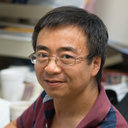Differential Effects of Glycyrrhiza Species on Genotoxic Estrogen Metabolism: Licochalcone A Downregulates P450 1B1, whereas Isoliquiritigenin Stimulates It.
キーワード
概要
Estrogen chemical carcinogenesis involves 4-hydroxylation of estrone/estradiol (E1/E2) by P450 1B1, generating catechol and quinone genotoxic metabolites that cause DNA mutations and initiate/promote breast cancer. Inflammation enhances this effect by upregulating P450 1B1. The present study tested the three authenticated medicinal species of licorice [Glycyrrhiza glabra (GG), G. uralensis (GU), and G. inflata (GI)] used by women as dietary supplements for their anti-inflammatory activities and their ability to modulate estrogen metabolism. The pure compounds, liquiritigenin (LigF), its chalcone isomer isoliquiritigenin (LigC), and the GI-specific licochalcone A (LicA) were also tested. The licorice extracts and compounds were evaluated for anti-inflammatory activity by measuring inhibition of iNOS activity in macrophage cells: GI ≫ GG > GU and LigC ≅ LicA ≫ LigF. The Michael acceptor chalcone, LicA, is likely responsible for the anti-inflammatory activity of GI. A sensitive LC-MS/MS assay was employed to quantify estrogen metabolism by measuring 2-MeOE1 as nontoxic and 4-MeOE1 as genotoxic biomarkers in the nontumorigenic human mammary epithelial cell line, MCF-10A. GG, GU, and LigC increased 4-MeOE1, whereas GI and LicA inhibited 2- and 4-MeOE1 levels. GG, GU (5 μg/mL), and LigC (1 μM) also enhanced P450 1B1 expression and activities, which was further increased by inflammatory cytokines (TNF-α and IFN-γ). LicA (1, 10 μM) decreased cytokine- and TCDD-induced P450 1B1 gene expression and TCDD-induced xenobiotic response element luciferase reporter (IC50 = 12.3 μM), suggesting an antagonistic effect on the aryl hydrocarbon receptor, which regulates P450 1B1. Similarly, GI (5 μg/mL) reduced cytokine- and TCDD-induced P450 1B1 gene expression. Collectively, these data suggest that, of the three licorice species that are used in botanical supplements, GI represents the most promising chemopreventive licorice extract for women's health. Additionally, the differential effects of the Glycyrrhiza species on estrogen metabolism emphasize the importance of standardization of botanical supplements to species-specific bioactive compounds.



